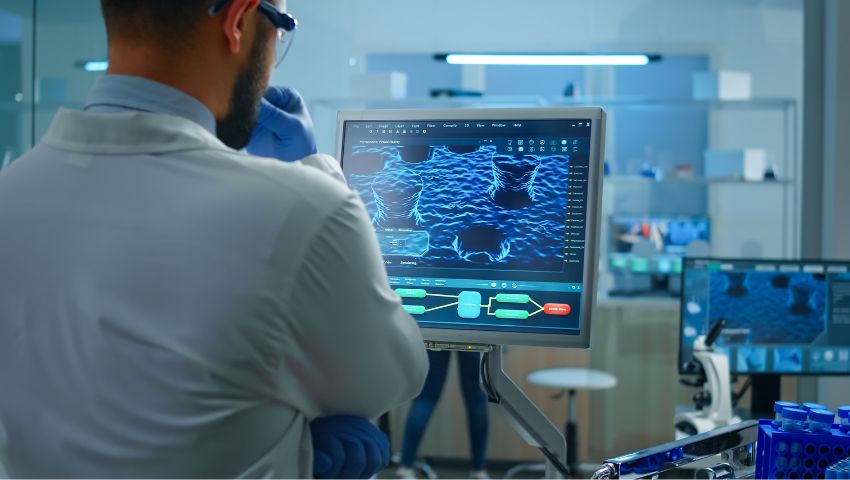
Table of Contents
- Introduction
- Why Real-Time Monitoring Matters in IVF
- How IoT Sensors Work in Embryo Culture
- Key Benefits of IoT in Embryology Labs
- Challenges in Implementing IoT Monitoring
- Future of IoT in Reproductive Medicine
- FAQs
- Conclusion
Introduction
In vitro fertilization (IVF) depends heavily on precise laboratory conditions to support embryo growth. Temperature, humidity, oxygen levels, and pH must remain stable inside incubators. Even slight deviations can impact embryo viability. Traditional monitoring methods rely on manual checks or periodic system alerts. Today, IoT sensors are transforming embryo culture monitoring by enabling real-time, automated tracking of critical parameters.
Why Real-Time Monitoring Matters in IVF
Embryos are highly sensitive to fluctuations in their environment. Delays in detecting issues—such as oxygen imbalance, CO₂ irregularities, or temperature shifts—can lower implantation rates. Real-time monitoring through IoT ensures that any abnormal change is instantly detected, allowing embryologists to respond quickly and maintain optimal culture conditions.
How IoT Sensors Work in Embryo Culture
IoT sensors collect continuous data from incubators and lab environments. This data is transmitted securely to cloud-based dashboards or lab management software. Key elements include:
- Temperature sensors – track incubator stability at micro-levels.
- Gas sensors – monitor oxygen and CO₂ levels crucial for embryo development.
- Humidity sensors – ensure proper moisture balance to prevent embryo stress.
- Smart alerts – notify embryologists instantly of deviations via mobile or desktop.
By integrating with IVF lab software, IoT-driven systems create a seamless ecosystem of monitoring and reporting.
Key Benefits of IoT in Embryology Labs
- Continuous, real-time data collection without manual intervention.
- Reduced human error through automation.
- Predictive maintenance of incubators using sensor data trends.
- Enhanced data accuracy for regulatory compliance and audits.
- Improved embryo viability and IVF success rates by preventing unnoticed fluctuations.
Challenges in Implementing IoT Monitoring
- Cost of deployment – IoT-enabled incubators and sensors require initial investment.
- Data security concerns – patient-linked data must remain HIPAA and GDPR compliant.
- Integration issues – existing lab equipment may not be compatible with new IoT solutions.
- Staff training – embryologists need to adapt to new monitoring workflows.
Future of IoT in Reproductive Medicine
The future points toward AI-integrated IoT platforms that not only monitor but also predict embryo outcomes. Machine learning could analyze sensor data patterns to identify embryos with the highest potential, supporting embryologists in decision-making. With further advancements, IoT-driven embryo culture systems may redefine standards in reproductive medicine.
FAQs
Q1: What role do IoT sensors play in IVF labs?
They continuously monitor incubator conditions—like temperature, CO₂, and humidity—to ensure embryos develop in stable environments.
Q2: Can IoT sensors improve IVF success rates?
Yes, by reducing unnoticed fluctuations and human error, they help maintain optimal conditions, which can enhance embryo viability.
Q3: Is data from IoT monitoring secure?
When configured properly, IoT systems encrypt data and comply with healthcare standards such as HIPAA and GDPR.
Q4: Are IoT-enabled systems cost-effective for small clinics?
While initial costs may be high, long-term benefits—like fewer cycle failures and predictive maintenance—make them cost-effective.
Vitrify Pricing Plans
| 20 – 50 License | 50 – 100 License | 100+ License | |||
| Perfect for growing clinics needing flexible, scalable IVF management and secure operations. | Ideal for mid-sized clinics managing high patient volumes with seamless efficiency and care. | Built for large clinics demanding powerful, enterprise-level IVF solutions and complete scalability. | |||
| $19.99 Month/License |
$219.99 Year/License |
$17.99 Month/License |
$197.99 Year/License |
$15.99 Month/License |
$175.99 Year/License |
|---|---|---|---|---|---|
| ✔Appointment Scheduling | ✔Appointment Scheduling | ✔Appointment Scheduling | |||
| ✔Couple Registration | ✔Couple Registration | ✔Couple Registration | |||
| ✔Patient Records Management | ✔Patient Records Management | ✔Patient Records Management | |||
| ✔Basic Reporting | ✔Basic Reporting | ✔Basic Reporting | |||
| ✔Basic Invoicing | ✔Basic Invoicing | ✔Basic Invoicing | |||
| ✔Email Reminders | ✔Email Reminders | ✔Email Reminders | |||
| ✔SMS Reminders* | ✔SMS Reminders* | ✔SMS Reminders* | |||
| ✔WhatsApp Reminders* | ✔WhatsApp Reminders* | ✔WhatsApp Reminders* | |||
| ✔Essential Support | ✔Essential Support | ✔Essential Support | |||
| ✔MIS Reporting | ✔MIS Reporting | ✔MIS Reporting | |||
| ✔IVF Medical Record Management | ✔IVF Medical Record Management | ✔IVF Medical Record Management | |||
| ✔ART Cycle Management | ✔ART Cycle Management | ✔ART Cycle Management | |||
| ✔IVF Procedure Recording | ✔IVF Procedure Recording | ✔IVF Procedure Recording | |||
| ✔Basic Billing | ✔Basic Billing | ✔Basic Billing | |||
| ✔Limited Data Export (PDF) | ✔Limited Data Export (PDF) | ✔Limited Data Export (PDF) | |||
Conclusion
IoT sensors are transforming embryo culture monitoring by delivering continuous, real-time insights that improve precision, reduce manual intervention and enhance clinical decision-making in IVF labs. By integrating advanced technologies, clinics can ensure healthier embryo development and improved success rates. Solutions like Vitrify IVF software further complement IoT adoption, offering secure data integration, seamless workflows and smarter lab management for future-ready fertility care.